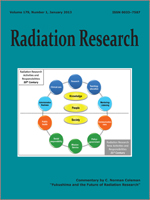We previously established annexin A2 as a radioresponsive protein associated with anchorage independent growth in murine epidermal cells. In this study, we demonstrate annexin A2 nuclear translocation in human skin organotypic culture and murine epidermal cells after exposure to X radiation (10–200 cGy), supporting a conserved nuclear function for annexin A2. Whole genome expression profiling in the presence and absence of annexin A2 [shRNA] identified fundamentally altered transcriptional programming that changes the radioresponsive transcriptome. Bioinformatics predicted that silencing AnxA2 may enhance cell death responses to stress in association with reduced activation of pro-survival signals such as nuclear factor kappa B. This prediction was validated by demonstrating a significant increase in sensitivity toward tumor necrosis factor alpha-induced cell death in annexin A2 silenced cells, relative to vector controls, associated with reduced nuclear translocation of RelA (p65) following tumor necrosis factor alpha treatment. These observations implicate an annexin A2 niche in cell fate regulation such that AnxA2 protects cells from radiation-induced apoptosis to maintain cellular homeostasis at low-dose radiation.
How to translate text using browser tools
13 November 2012
Annexin A2 Modulates Radiation-Sensitive Transcriptional Programming and Cell Fate
Katrina M. Waters,
David L. Stenoien,
Marianne B. Sowa,
Claere von Neubeck,
William B. Chrisler,
Ruimin Tan,
Ryan L. Sontag,
Thomas J. Weber
ACCESS THE FULL ARTICLE

Radiation Research
Vol. 179 • No. 1
January 2013
Vol. 179 • No. 1
January 2013




